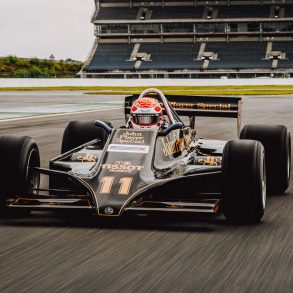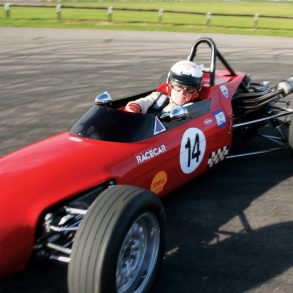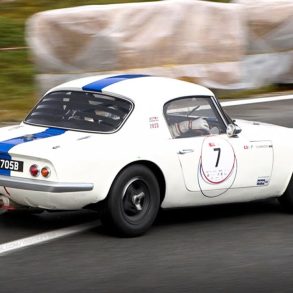We have had this conversation before! When you get asked a question about your greatest drive, or greatest race or the greatest racecar, you always have to qualify it. I have had cars that did well that I hated, and cars that never won but were great to drive. Some cars were fun to race, and others definitely were not.
When Colin Chapman produced his first rear-engine Lotus 18, I had become what I termed a “mature” driver. I had driven a wide range of cars by then and could adapt to new ideas and new layouts. When I first saw the Lotus 18 in the early days of 1960, I knew there would be a big change and that it wouldn’t be long before the Rob Walker Cooper I was driving would be outdated. Colin had spent a lot of time with the Lotus 16, the front-engine car, which was very complex, and simply not a match for the Coopers. When Colin finally moved to rear engine, we knew he would produce something that would be quick.
The Lotus 18-Climax would turn out to be a Grand Prix car that would give me some very good days…and some very bad ones. When the car appeared in 1960, Lotus still hadn’t been able to make the works cars reliable. It was also nothing special to look at…I always said it was a biscuit box on wheels. It had what appeared to be a strange suspension layout, with the half-shafts positioning the wheels laterally at the top, with a reverse lower wishbone underneath. It looked odd but it was pure Chapman…and you could guess he would make it work.
The odd gearbox from the Lotus 16 found its way into the 18, the so-called “queerbox” and it was hard to get used to in 1960 with the bigger 2.5-liter Climax engine. I only used that gearbox three times in 1960 at Monaco, Zandvoort and Spa. Then we put the Colotti gearbox into the car when it was rebuilt after my rather large Spa crash. As Innes Ireland had been beating me in the Lotus 18, which was quicker than Rob’s Cooper, Rob decided we had to have a Lotus. When I first tested the Lotus 18 at Goodwood before Monaco, I was amazed at how responsive it was; it was a real extension of the driver, it was that good.
But the 18 was not forgiving and was harder to drive than the Cooper. If you could drive it to its limits, it was faster than the Cooper. It was difficult to adjust, and there were so many things on it that could be adjusted. This made it a difficult car to work with in some ways. Even with the “queerbox,” we managed to win at Monaco and get on pole at Zandvoort, where a tire went when Jack Brabham hurled up a piece of kerbing stone and I lost a lot of time. Then at Spa, I hit a bump in practice at 140 mph and the wheel came off when the axle shaft broke. That was a big crash.
In 1961, with the new 1.5-liter engine rules, I had two of my best races, winning at Monaco and then at the Nürburgring where we had the satisfaction of beating the Ferraris, which won everywhere else. The Lotus 18 brings back great memories…though not all good!
As told to Ed McDonough










